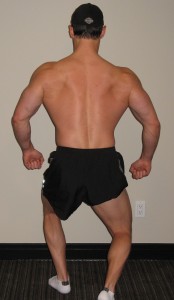Very interesting article on the Fourth Turning, the idea that about every 80 to 100 years, culture goes through a radical reinvention of itself - the time-frame is about every four generations. According to this model,we're due to be in the midst of a change right now. Sounds about right.
James Quinn - The Great Awakening: Boomers, Your Crisis Has ArrivedHere begins part two (of three) of this series:"There is a mysterious cycle in human events. To some generations, much is given. Of other generations, much is expected. This Generation has a rendezvous with destiny."
Franklin Roosevelt – 1936
President Roosevelt was correct. The generation he was speaking to was already dealing with the worst financial crisis in the history of the United States, the Great Depression. By 1945, over 400,000 of this generation had lost their lives. Another 600,000 men were wounded. Much was expected and much was sacrificed. Every generation has a rendezvous with destiny. The generation that won World War II passed the ultimate test and proceeded to produce the next generation, the Baby Boom Generation. Their rendezvous with destiny is underway. Will it be a rendezvous with history that results in World War III, the collapse of the Great American Republic, dictatorship, or a return to the original Constitutional principles upon which this country was founded? Many of you are probably thinking the idea of WW III, collapse or dictatorship is crazy. I’d respond with the wisdom of Kramer from the classic Seinfeld show.
Jerry: "Oh you're crazy"
Kramer: "Am I? Or am I so sane that you just blew your mind?"
Jerry: "It's impossible"
Kramer: "Is it? Or is it so possible your head is spinning like a top?"
Jerry: "It can't be"
Kramer: "Can't it? Or is your entire world just crashing down all around you?"
As a student of history I’m drawn to the concept of cycles. It is comforting to think that history has recurring patterns and a natural rhythm. Trying to figure out why the major events in history occurred is complex, challenging and fascinating. When I read an updated 1997 article by Doug Casey in December on John Mauldin’s site called Foundations of Crisis, I was blown away. Mr. Casey had read the book The Fourth Turning by William Strauss and Neil Howe and made some forecasts of what would happen in the next few years. They were eerily accurate, including an airliner being purposefully crashed into a government building to trigger a crisis. After reading this article I’ve been trying to wrap my arms around the implications of their theory and the possible consequences for the United States. I know that an individual can learn from the past. I’ve always thought that poet George Santayana’s quote, "Those who cannot remember the past are condemned to repeat it", is profound and worth studying.
The crucial issue is whether societies as a whole are capable of learning from the past or are they condemned to the inevitable cycle of history. Can an individual change the course of history? Was World War II inevitable, even if Adolph Hitler had been killed during World War I? Is there anything that can be done to avert the cyclical crisis that seems to arrive on a consistent basis throughout history? Is our destiny already preordained? Mr. Strauss and Mr. Howe wrote the following words in 1997:
Based on historical patterns, America will hit a once-in-a-century national crisis within the decade...'like winter,' the crisis or 'fourth turning' cannot be averted. It will last 20 years or so and bring hardship and upheavals similar to previous fourth turnings, such as the American Revolution, the Civil War, the Great Depression and World War II. The fourth turning is a perilous time because the result could be a new 'golden age' for America or the beginning of the end. It all will begin with a 'sudden spark' that catalyzes a crisis mood around the year 2005.
I don’t have a preconceived notion of our country’s destiny, but I’m getting a bad feeling about the track we are on. The last thing in the world I want to see is my three boys being forced into a war caused by a bunch of clueless 60 year old political hack morons in Washington DC fulfilling their destiny to cause the once in a century national crisis. Based on the foolish actions of most politicians in Washington over the last thirty years, I fear for the future of our country. I don’t think the politicians in Washington comprehend the state of affairs. I sense the mood of the country turning. Fear, anger and disillusionment are the prevalent themes. Change is coming, but it is not the change that Barack Obama campaigned for. It will be forced upon us by circumstances beyond any one person’s control. While we are hurtling towards our summit with destiny, Congress continues its path of pork barrel spending, short term solutions, party politics, and condemning our children and grandchildren to a lower standard of living. The “leaders” of this country are using the tried and true method of using fear to ram through their $900 billion tax on future generations. President Bush used the same fear tactics to launch his invasion of Iraq. I see a similar success story with the coming stimulus package. Maybe the coming crisis will ultimately lead to Great Leaders rising to the occasion.
THE FOURTH TURNING
Strauss and Howe believe that history is marked by 80 to 100 year cycles which match the lifespan of most human beings. These cycles are discernible by four generations of 20 to 25 years that show remarkable consistency over history. I’m sure this theory will anger the individualists out there. They are not saying that everyone within a generation acts alike, but are shaped by joint experiences and time period in history. According to Strauss and Howe:
Turnings last about 20 years and always arrive in the same order. Four of them make up the cycle of history, which is about the length of a long human life. The first turning is a High, a period of confident expansion as a new order becomes established after the old has been dismantled. Next comes an Awakening, a time of rebellion against the now-established order, when spiritual exploration becomes the norm. Then comes an Unraveling, an increasingly troubled era of strong individualism that surmounts increasingly fragmented institutions. Last comes the Fourth Turning, an era of upheaval, a Crisis in which society redefines its very nature and purpose.
They are able to trace these turnings back to 1500 with remarkable consistency. They have broken U.S. history into the following cycles of history: Revolutionary Cycle (1701-1791), Civil War Cycle (1792-1859), Great Power Cycle (1860-1942), and the Millennial Cycle (1943-2???). Within these cycles are four distinct generations, that have a consistent persona because their parents had similar views, they listened to the same music, read the same books, were taught the same curriculum, were bombarded with the same marketing messages, and experienced the same set of unique experiences. Even though every Baby Boomer is not alike, the sheer size of this generation of 76 million people has left a dramatic imprint on history. The shared experiences of this cohort are clearly visible as they have marched through the cycle of history. The four typical generations within a cycle as described by Strauss and Howe are:
Prophet/Idealist
A Prophet (or Idealist) generation is born during a High, spends its rising adult years during an Awakening, spends midlife during an Unraveling, and spends old age in a Crisis. Prophetic leaders have been cerebral and principled, summoners of human sacrifice, wagers of righteous wars. Early in life, few saw combat in uniform. Late in life, most prophets come to be revered as much for their words as for their deeds.
Nomad/Reactive
A Nomad (or Reactive) generation is born during an Awakening, spends its rising adult years during an Unraveling, spends midlife during a Crisis, and spends old age in a new High. Nomadic leaders have been cunning, hard-to-fool realists, taciturn warriors who prefer to meet problems and adversaries one-on-one.
Hero/Civic
A Hero (or Civic) generation is born during an Unraveling, spends its rising adult years during a Crisis, spends midlife during a High, and spends old age in an Awakening. Heroic leaders are considered to have been vigorous and rational institution-builders, busy and competent in old age. All of them entering midlife were aggressive advocates of technological progress, economic prosperity, social harmony, and public optimism.
Artist/Adaptive
An Artist (or Adaptive) generation is born during a Crisis, spends its rising adult years in a new High, spends midlife in an Awakening, and spends old age in an Unraveling. Artistic leaders have been advocates of fairness and the politics of inclusion, irrepressible in the wake of failure.
This concept of 100 year cycles consisting of four generations is very logical to me. It all seems so theoretical and quaint until you realize that if they are right, we have just entered The Fourth Turning, a period of upheaval, crisis and enormous societal and possibly worldwide change. This is not a normal cyclical recession and bear market. There are much larger forces at work. Washington politicians are so consumed with their short-term election politics, power plays, enrichment of supporters, and letting lobbyists write our laws, they are incapable of seeing the real gathering storm that is about to engulf them. They go about their day to day horse trading and fooling the public with rhetoric, while a crisis of epic proportions is looming just over the horizon.
100 YEARS TO LIVE
The recent song by the group Five for Fighting called 100 Years reflects the 100 year cycle that all humans live through.
15 there's still time for you
Time to buy and time to lose
15, there's never a wish better than this
When you only got 100 years to live
I'm 33 for a moment
Still the man, but you see I'm a they
A kid on the way
A family on my mind
I'm 45 for a moment
The sea is high
And I'm heading into a crisis
Chasing the years of my lifeThe lyrics heading into a crisis couldn’t be truer today. We are only on this earth for 100 years. Why shouldn’t every person want to leave the earth a better place than they were born into? Instead, the world has periods of advancement and periods of regression, periods of peace and periods of war, periods of awakening and periods of crisis.
The last 150 years in American history as segmented by Strauss and Howe is charted below. Each generation experiences the four turnings at a different time in their lives. An appreciation of past turnings may give us clues to what will befall our country in the next 20 years.
Great Power Saeculum
Missionary Generation
Prophet (Idealist)
1860–1882
The indulged home-and-hearth children of the post-Civil War era. They came of age as labor anarchists, and campus rioters. In the 1930s and ‘40s, their elder elite became the “Wise Old Men” who enacted a “New Deal” (and Social Security) for the benefit of youth, led the global war against fascism, and reaffirmed America’s highest ideals during a transformative era in world history.
Lost Generation
Nomad (Reactive)
1883–1900
The Third Great Awakening was a period of religious activism in American history from the late 1850s to the 1900s. It affected pietistic Protestant denominations and had a strong sense of social activism. It gathered strength from the postmillennial theology that the Second Coming of Christ would come after mankind had reformed the entire earth.
G.I. Generation (aka Greatest Generation)
Hero (Civic)
1901–1924
As young adults, their uniformed corps patiently endured depression and heroically conquered foreign enemies. In a midlife subsidized by the G.I. Bill, they built gleaming suburbs, invented miracle vaccines, plugged “missile gaps,” and launched moon rockets.
Silent Generation
Artist (Adaptive)
1925–1942
Grew up as the suffocated children of war and depression. They came of age just too late to be war heroes and just too early to be youthful free spirits. Instead, this early-marrying Lonely Crowd became the risk-averse technicians and professionals—as well as the sensitive rock ‘n rollers and civil-rights advocates—of a post-crisis era in which conformity seemed to be a sure ticket to success.
Millennial Saeculum
Baby Boom Generation
Prophet (Idealist)
1943–1960
Basked as children in Dr. Spock permissiveness, suburban conformism, Sputnik-era schooling, Beaver Cleaver friendliness, and Father Knows Best family order. They came of age rebelling against the worldly blueprints of their parents. Youth pathologies worsened—and SAT scores began a 17-year slide. In the early 1980s, many young adults became self-absorbed “yuppies” with mainstream careers but perfectionist lifestyles. Entering midlife (and national power), they are trumpeting values, touting a “politics of meaning,” and waging scorched-earth Culture Wars.
13th Generation (aka Generation X)
Nomad (Reactive)
1961–1981
Survived a “hurried” childhood of divorce, latchkeys, open classrooms, devil-child movies, and a shift from G to R ratings. They came of age curtailing the earlier rise in youth crime and fall in test scores—yet heard themselves denounced as so wild and stupid as to put The Nation At Risk. In jobs, they embrace risk and prefer free agency over loyal corporatism. Politically, they lean toward pragmatism and non-affiliation, and would rather volunteer than vote.
Millennial Generation
Hero (Civic)
1982–200?
As abortion and divorce rates ebbed, the popular culture began stigmatizing hands-off parental styles and recasting babies as special. Child abuse and child safety became hot topics, while books teaching virtues and values became best-sellers. Today, politicians define adult issues (from tax cuts to deficits) in terms of their effects on children.
New Silent Generation
Artist (Adaptive)
200?–
This generation is the first to be born in a digital world and is currently in grade school. This new generation is being molded from the outset to be unique, with a focus on advanced second-hand interactive learning techniques. The result being Gen Z children are exposed to an environment that is heavy on stimuli, and weaker in interpersonal relationships.
Sources: Wikipedia & The Fourth Turning
THE FIRST TURNING – THE HIGH (Spring)
The American High in the 20th century began in 1946 with unconditional victory in World War II. According to Strauss and Howe:
A HIGH brings a renaissance to community life. With the new civic order in place, people want to put the Crisis behind them and feel content about what they have collectively achieved. Any social issues left unresolved by the Crisis must now remain so. The need for dutiful sacrifice has ebbed, yet the society continues to demand order and consensus. The recent fear for group survival transmutes into a desire for investment, growth, and strength--which in turn produces an era of commercial prosperity, institutional solidarity, and political stability. The big public arguments are over means, not ends.
The mood of the country after World War II was joyous. America was left as the sole global power. Its industrial power was unsurpassed. Europe, Japan and the Soviet Union lay in shambles. The country settled into a period of prosperity and conformity. America was brimming with confidence. We were confident that our democratic principles could be spread throughout the world. The American High lasted from the Truman presidency through the Kennedy presidency. As the youthful President Kennedy took office in 1961, anything was possible. We could put a man on the moon, defeat communism, and eradicate poverty. The symbol of this period would be the Disney World ride Carousel of Progress, a sterile world inhabited by animatronic people. This time period also gave life to the Baby Boom Generation. Their mouseketeers ears and Leave it to Beaver lives of the 1950’s were brought to an abrupt confidence shattering end with the assassination of John F. Kennedy in 1963.
THE SECOND TURNING – THE AWAKENING (Summer)
The Fourth Awakening of the great American Republic began in 1964. This episode is known as the Conscious Revolution. Strauss and Howe describe these phases in history:
An AWAKENING arrives with a dramatic challenge against the High’s assumptions about benevolent reason and congenial institutions. The outer world now feels trivial compared to the inner world. New spiritual agendas and social ideals burst forth, along with utopian experiments seeking to reconcile total fellowship with total autonomy. The prosperity and security of a High are overtly disdained though covertly taken for granted. A society searches for soul over science, meanings over things. Youth-fired attacks break out against the established institutional order. As these attacks take their toll, society has difficulty coalescing around common goals. People stop believing that social progress requires social discipline. Public order deteriorates, and crime and substance abuse rise.
The upheaval of the 1960’s took the country by surprise. The Vietnam War, assassination of Bobby Kennedy and Martin Luther King, campus riots, Kent State massacre, drug use, and promiscuous sex marked a vivid departure from the High. The older establishment was outraged by the personal liberation youth culture. Baby Boomers rebelled against everything their parents stood for. The Cultural Revolution was shocking to the older generation. Previous Awakenings in U.S. History were religiously based. The 1960’s and 1970’s were a tumultuous period that tore the fabric of American life apart. Instead of being led by mainstream religions, this Awakening was led by a Baby Boom generation that had been coddled and spoiled by their parents. Instead of turning to religion, they turned to self actualization. They became the self absorbed “Me Generation”.
The New Age teenage hippies of the 1960’s grew into selfish adults, more concerned by their professional careers, obtaining a Harvard MBA, acquiring the biggest McMansion, and graduating from a 200 Series BMW to a 300 Series BMW. As the country moved out of the 1970’s into a new era, individualism and ego enrichment became the dominant themes. The end of this Awakening period in 1984 was marked by the classification of the then 25 to 35 year old Baby Boom Generation as Yuppies. Young upwardly mobile professionals were characterized accurately in the movie The Big Chill, the novel Bonfire of the Vanities by Tom Wolfe and the TV show Thirtysomething. These were not flattering portrayals.
THE THIRD TURNING – THE UNRAVELING (Fall)
The latest Unraveling period in U.S. history began during the presidency of Ronald Reagan. His theme of “Morning in America” convinced most of the country that a new era of prosperity would lead to all boats rising. Strauss and Howe describe the traits during these periods:
An UNRAVELING begins as a society-wide embrace of the liberating cultural forces set loose by the Awakening. People have had their fill of spiritual rebirth, moral protest, and lifestyle experimentation. Content with what they have become individually, they vigorously assert an ethos of pragmatism, self-reliance, laissez faire, and national (or sectional or ethnic) chauvinism. While personal satisfaction is high, public trust ebbs amid a fragmenting culture, harsh debates over values, and weakening civic habits. The sense of guilt (which rewards principle and individuality) reaches its zenith. As moral debates brew, the big public arguments are over ends, not means. Decisive public action becomes very difficult, as community problems are deferred. Eventually, cynical alienation hardens into a brooding pessimism. The approaching specter of public disaster ultimately elicits a mix of paralysis and apathy.
The period between 1984 and 2001 was a period of peace and prosperity. President Reagan cut taxes, Paul Volcker defeated inflation, the Soviet Union collapsed, the stock market went up 1,000%, and MBA yuppies elevated to senior management positions on Wall Street. This interlude echoed the High of 1946 to 1964. The self involved Baby Boom Generation kept busy accumulating stuff. Their personal satisfaction is what mattered most. Gordon Gekko, the John Thain of his generation, uttered the words in the movie Wall Street that reflect the mood of the 1980’s. “Greed, for lack of a better word, is good.”
The 1990’s were dominated by cultural wars. The Republican Party and Democratic Party debate become extremely partisan. Public deliberations became harsh. Moral certitude was exuded by all sides of every issue. Hard driving overachieving narcissistic yuppies wearing Brooks Brothers suits and Rolex watches dominated corporate America. As twenty-eight-year-old Rob Lewis, a yuppie profiled in Newsweek, noted, yuppies were often willing to sacrifice "marriage, families, free time, relaxation." He added, "Our marriages seem like mergers, our divorces like divestitures."
The internet was going to change the world. Fraudulent IPOs were rolled out to the unsuspecting public. Day traders could get rich without working. Government did what it does best, spend money and defer all tough decisions to the distant future. A tough unpopular decision deferred is the path to reelection for a professional politician. The unwillingness to work together towards solutions that would insure that future generations weren’t left with the debts of the Baby Boom Generation, led to the current crisis being worse than it needed to be. As yuppies dashed down the streets of New York City, beating away on their crack-berries, on a sunny cool Fall morning, little did they know that their materialistic egotistical frenzied lives were about to change forever. With the tragic murder of 3,000 Americans in the Saudi-led terrorist attacks of September 11, 2001, the Fourth Turning had arrived.
THE FOURTH TURNING – THE CRISIS (Winter)
We know how this Crisis period in our history began. We don’t know how it will end. Previous crisis periods in American history included The American Revolution (1773-1794), The Civil War (1860-1865), and the twin crisis of The Great Depression and World War II (1929-1945). All three period included wrenching highly destructive total wars. Will our current crisis period result in World War III?
Strauss and Howe describe the commonalities of most crisis periods:
A CRISIS arises in response to sudden threats that previously would have been ignored or deferred, but which are now perceived as dire. Great worldly perils boil off the clutter and complexity of life, leaving behind one simple imperative: The society must prevail. This requires a solid public consensus, aggressive institutions, and personal sacrifice. People support new efforts to wield public authority, whose perceived successes soon justify more of the same. Government governs, community obstacles are removed, and laws and customs that resisted change for decades are swiftly shunted aside. A grim preoccupation with civic peril causes spiritual curiosity to decline. Public order tightens, private risk-taking abates, and crime and substance abuse decline. Families strengthen, gender distinctions widen, and child-rearing reaches a smothering degree of protection and structure. The young focus their energy on worldly achievements, leaving values in the hands of the old. Wars are fought with fury and for maximum result.
Every crisis period has been initiated by a catalyst. The passage of the Stamp Acts started the American Revolution, the election of Abraham Lincoln sparked the Civil War and the Stock Market Crash of 1929 initiated the Depression/WW II crisis. If history is our guide, the Iraq and Afghan Wars will not be the only wars during this crisis epoch. Many challenges lie ahead. I don’t think the majority of Americans are ready to meet these challenges.
Winter Has Arrived
Strauss & Howe wrote the following words in 1997:
America feels like it’s unraveling. Though we live in an era of relative peace and comfort, we have settled into a mood of pessimism about the long-term future, fearful that our superpower nation is somehow rotting from within. The America of today feels worse, in its fundamentals, than the one many of us remember from youth, a society presided over by those of supposedly lesser consciousness. We yearn for civic character but satisfy ourselves with symbolic gestures and celebrity circuses. We perceive no greatness in our leaders, a new meanness in ourselves. Each new election brings a new jolt, its aftermath a new disappointment.
The Prophet Generation is the elder statesmen as we begin this secular crisis. George W. Bush was born in 1946. He is the eldest of the Prophet/Baby Boom Generation. Barack Obama was born in 1961 at the very end of the Baby Boom Generation. These two men have or will lead the United States through most of this crisis stage. George Bush and his cohort of neo-conservatives and their drastic overreaction to the terrorist attacks of 9/11, have set the stage for the most dangerous crisis in U.S. history. A Crisis always results in the appearance of strong leaders. George Washington, Abraham Lincoln, and Franklin Roosevelt rose to the occasion during our previous Crisis episodes. Strong does not always mean wise, thoughtful or right. George Bush exhibited strong leadership during his tenure. Wisdom and thoughtfulness were not two of his better traits. Barack Obama is a smart man and has exhibited some strong leadership skills in his initial weeks in office. He has also exhibited an ability to exaggerate threats to get what he wants. Will he rise to the level of Washington, Lincoln or Roosevelt?
On the day George Bush took office, he inherited an annual budget surplus that was the result of gridlock in Washington and PAYGO restrictions on Congressional spending. The National Debt stood at $5.7 trillion and our unfunded future liabilities for Social Security, Medicare and Medicaid stood at $20 trillion. We had not been at war for nine years. Today, our National Debt is $10.7 trillion, poised to rocket above $13 trillion in the next year. Our unfunded liabilities now total $53 trillion as President Bush signed a prescription benefit plan expansion that added $8 trillion to our grandchildren’s burden. Since 9/11 almost 5,000 Americans have died in battle, with 50,000 Americans wounded. We’ve spent $800 billion, so far, on a war that didn’t need to be fought. Untold thousands of Iraqi and Afghan civilians have been killed or wounded, despite the fact that none of the 9/11 terrorists were from Iraq or Afghanistan. Fifteen of the nineteen hijackers were from our “staunch ally”, Saudi Arabia. The acts of a terrorist organization consisting of less than 2,000 members resulted in actions by an American President that resulted in declining American moral influence throughout the world, increased terrorism around the world, budget deficits that threaten the very existence of our capitalistic system, and an American public that is angry, disillusioned and confused. Doug Casey in 1997 described the future actions of George Bush to a tee. “The Boomers in Elderhood will be dogmatic, harsh, puritanical, and quite willing to burn down the barn in order to destroy whatever rats they see.”
Domestically, the period from 2001 to 2008 could be described as “Boomers Gone Wild”. Boomers in their 40’s and 50’s now dominate society, as they have assumed the positions of power in government and business. Based on what they have accomplished so far, I truly fear for what comes next. After 9/11, President Bush urged Americans to spend to defeat terrorism, while Alan Greenspan lowered interest rates to historically low levels. This was like waving a red cape in front of a bull. The materialistic, self actualizing, individualistic Boomers went on the grandest borrowing and spending spree in the history of the world. Their mission: Save the world from terrorism by buying a 6,000 sq ft McMansion, the largest HDTV, the biggest Hummer, and most expensive Rolex. Boomers running Wall Street were happy to oblige with loans and complex derivatives to finance the Mardi Gras like celebration of capitalism.
The aftermath of the eight years of partying is, not surprisingly to some, the greatest hangover in the history of the world. There are 19 million vacant homes, 10% of all homes in the U.S. are in foreclosure, 20 million homeowners are underwater with their mortgage, $30 trillion of consumer wealth has be obliterated, the savings rate dropped below zero, consumer debt levels are at historic levels, and the banking system is insolvent. The Boomer economists, like Paul Krugman, are sure they have the answers (they don’t) and the current bank bailout tab has already reached $9.7 trillion. You have to hand it to Americans, we truly believe bigger is better. If this is the easy part of the twenty year crisis, I’m not looking forward to the hard part.




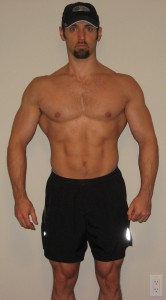 xx
xx  xx
xx 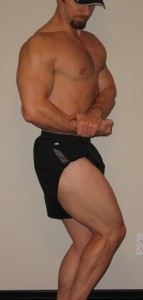 xx
xx 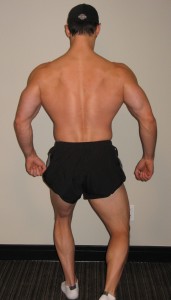
 xx
xx x x
x x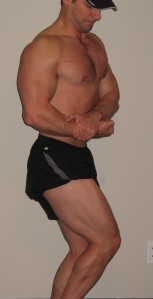 x xx
x xx 